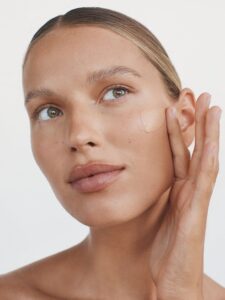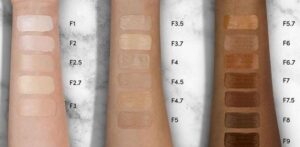The canvas upon which a flawless makeup masterpiece is crafted often begins with the selection of the right foundation. Foundation serves as the base for all other makeup products, providing an even complexion and a polished look. However, navigating the vast array of it’s options can be overwhelming. This comprehensive guide aims to demystify the process of choosing the perfect product, offering insights into understanding your skin, exploring different its types, selecting the right shade, mastering application techniques, and addressing common mistakes.
-
Understanding Your Skin:

The first step in choosing the right foundation involves understanding your skin. Skin types vary widely, from oily and acne-prone to dry and sensitive. Identifying your specific skin type allows you to choose the product that caters to your skin’s unique needs. Additionally, determining your undertone—whether it’s cool, warm, or neutral—is crucial for finding a foundation that complements your natural coloring.
Taking the time to establish a solid skincare routine before applying it is equally important. Hydrated and well-maintained skin serves as a better canvas for makeup application, enhancing the foundation’s effectiveness and ensuring a smoother finish.
Types of Foundations:
Foundations come in various forms, each catering to different preferences and skin types. Liquid ones offer versatility and coverage, powdered ones are ideal for oily skin, cream ones provide a balance between liquid and powder, stick ones offer convenience, and serum ones offer a lightweight option with skincare benefits. Understanding the characteristics of each type allows you to choose a foundation that aligns with your desired finish and application preferences.
-
Selecting the Right Shade:

Choosing the right shade is a crucial aspect of achieving a natural and harmonious look. To find the perfect match, it’s essential to test the product on your jawline and wrist. The jawline provides a closer match to your face, while the wrist can help you determine if the shade complements your overall skin tone. Natural lighting is preferred for testing the shades, as artificial lighting can distort colors.
Consideration of undertones plays a pivotal role in selecting the right shade. Warm undertones pair well with shades that have yellow or peachy tones, cool undertones complement foundations with pink or neutral tones, and individuals with neutral undertones have the flexibility to choose foundations from both warm and cool spectrums.
- Application Techniques:

Once you’ve chosen the right foundation, mastering the application techniques ensures a seamless and polished finish. The choice of application tools—whether makeup sponges, brushes, or fingers—can impact the final result. Makeup sponges, like beauty blenders, provide a flawless and airbrushed finish, brushes offer precision and control, while fingers can be effective for blending and building coverage.
Blending is a key aspect for application. The goal is to blend it into the skin seamlessly, avoiding any harsh lines or demarcations. Proper blending ensures a natural look that enhances your features without appearing heavy or cakey. Setting the foundation with a translucent powder helps control shine and prolongs the wear of your makeup.
-
Common Foundation Mistakes and How to Avoid Them:
Understanding common foundation mistakes is essential for achieving a professional look. One prevalent error is the cakey appearance that occurs when too much product is applied. To avoid this, start with a small amount of the product and build coverage gradually. Choosing the right primer is equally important, as it creates a smooth base for foundation application and helps it adhere better to the skin.

Another mistake is selecting the wrong shade, which can result in an unnatural or mismatched look. To prevent this, always test the shades in natural light and consider the undertones. Overlooking the importance of primer is a common oversight; a good primer not only improves it’s adherence but also addresses specific skin concerns such as pores or fine lines.
-
Special Considerations:
Certain situations may require specialized foundation choices. For individuals with sensitive skin, hypoallergenic and fragrance-free products are recommended to minimize the risk of irritation. The ones with SPF are ideal for sun protection, providing an additional layer of defense against harmful UV rays. When preparing for special occasions that require long-lasting makeup, opt for foundations with extended wear formulas to ensure your flawless look lasts throughout the event.
Conclusion:
In conclusion, choosing the right foundation involves a thoughtful and systematic approach. Understanding your skin type, exploring it’s different types, selecting the right shade, mastering application techniques, and being aware of common mistakes are all integral parts of this process. By following this comprehensive guide, you can confidently navigate the world of foundations, ensuring that your makeup not only looks professional but also enhances your natural beauty. Remember, the foundation is the canvas; choose wisely to create a masterpiece.
Engage with us through our instagram and tikt0k
Read more articles on our website and learn more about us through our about us page
